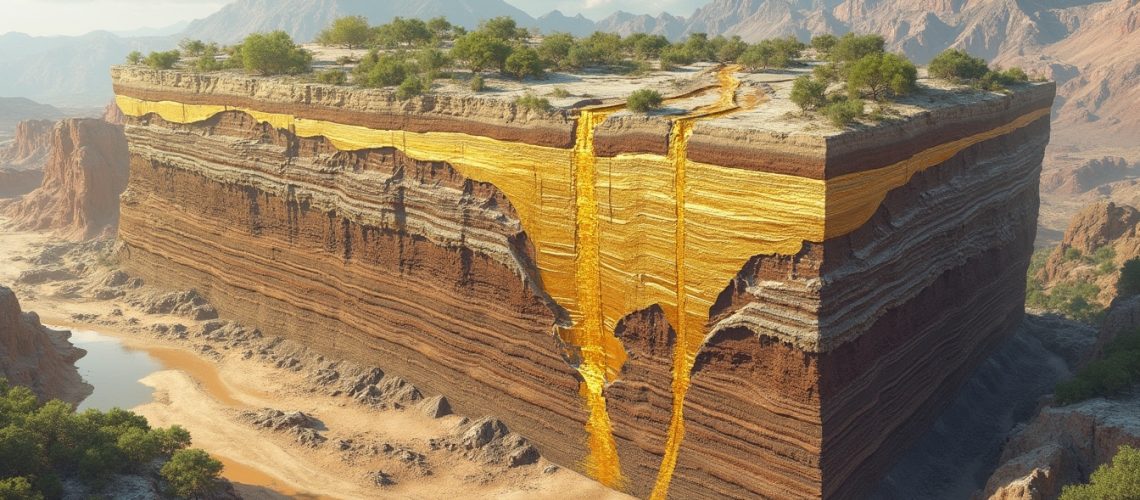Mesothermal Greenstone Shear-Zone Gold Deposits: A Comprehensive Geological Exploration
Mesothermal greenstone shear-zone gold deposits represent a fascinating and economically significant geological phenomenon that has captured the attention of geologists and investors worldwide. These complex mineral formations are characterised by their unique structural characteristics, precise formation conditions, and remarkable gold concentration potential.
What Are Mesothermal Greenstone Shear-Zone Gold Deposits?
Mesothermal greenstone shear-zone gold deposits are intricate geological structures formed within ancient crustal environments, typically associated with greenstone belts in the significance of structure in mesothermal deposits. These deposits originate from complex geological processes that occur at depths between 1 to 10 kilometres, where temperatures range from 250°C to 450°C, creating ideal conditions for gold mineralisation.
Historically, these deposits have formed throughout Earth’s geological timeline, with the majority emerging during two primary periods: the end of the Archaean era and the early Proterozoic period, approximately 3.4 billion years ago. Notable examples include the Kalgoorlie Super Pit in Western Australia and the Red Lake mine in Canada, which exemplify the remarkable gold-bearing potential of these geological formations.
Why Are Mesothermal Greenstone Shear-Zone Gold Deposits Significant?
The significance of these deposits extends beyond their geological complexity. Expert insights from Andrew Jackson on the commodity’s relevance highlight their critical role in global gold production. Typically, these deposits showcase impressive gold grades ranging between 7 to 10 grams per tonne, substantially higher than many alternative deposit types.
Statistical evidence demonstrates that in regions like Canada, mesothermal greenstone shear-zone gold deposits contribute significantly to national gold production. Their high-grade characteristics make them particularly attractive for mining operations, offering substantial economic potential despite their relatively localised nature.
How Do Mesothermal Greenstone Shear-Zone Gold Deposits Form?
The formation of these deposits involves intricate geological processes spanning billions of years. Partial crustal melting, triggered by tectonic events, plays a crucial role in concentrating gold within hydrothermal fluids. The process begins deep within the Earth’s crust, approximately 20-30 kilometres below the surface, where gold-enriched layers exist.
Tectonic compression and thrusting create conditions that facilitate partial melting, allowing gold to concentrate within the melt. Oxygen isotope analyses have revealed that the hydrothermal fluids originate from metamorphic processes within the crust, rather than deeply penetrating groundwater sources.
What Are the Key Geological Features of These Deposits?
Mesothermal greenstone shear-zone gold deposits typically comprise steeply dipping quartz and carbonate-rich veins, often forming complex vein systems or stockworks. These structures are characterised by irregularly distributed mineralisation, with high-grade ore shoots frequently occurring along steep plunges.
The geological architecture involves thrust duplex structures, which provide critical fluid channelways for gold transportation. Greenstone belts, granite plutons, and metamorphic rocks constitute the primary geological environment for these deposits, with sulfide minerals like pyrite and arsenopyrite commonly present.
How Are These Deposits Located and Explored?
Exploration methodologies including seismic surveys, magnetics, and IP have revolutionised the identification of potential mesothermal gold deposits. These techniques allow geologists to map crustal structures, identify potential fluid channelways, and locate promising mineralisation zones.
Geochemical surveys play a crucial role, with soil sampling and pathfinder element analysis helping to outline potential gold anomalies. While direct gold detection remains challenging, associated elements like silver, arsenic, and tungsten provide valuable exploration indicators.
What Challenges and Opportunities Exist in Exploitation?
Approximately 10-20% of these deposits are considered refractory, presenting significant processing challenges. Key evaluation criteria of grade, continuity, and width become essential in determining economic viability.
Mining approaches vary between underground methods like shrinkage stoping and open-pit techniques, depending on deposit characteristics. The choice depends on factors such as vein thickness, depth, and surrounding rock properties.
Conclusion
Mesothermal greenstone shear-zone gold deposits represent a testament to Earth’s complex geological processes, offering fascinating insights into mineral concentration mechanisms. Their significance extends beyond mere economic potential, providing a window into the planet’s remarkable geological history.
Understanding these deposits requires a multidisciplinary approach, combining structural geology, geochemistry, and advanced exploration technologies. As our technological capabilities continue to advance, our ability to locate, assess, and exploit these remarkable geological formations will undoubtedly improve.
Are You Ready to Unlock the Next Major Gold Discovery?
Gain unparalleled insights into mining investment opportunities with Discovery Alert’s AI-driven, real-time notifications on significant mineral discoveries like mesothermal greenstone shear-zone gold deposits. Perfect for both new and seasoned investors, our service simplifies complex geological data and highlights actionable short-term and long-term investment opportunities. Experience the power of Discovery Alert with a 30-day free trial to elevate your investment strategies. Dive into the world of high-grade gold discoveries with us today. Visit Discovery Alert.







